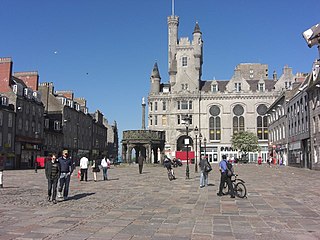 W
WAberdeen Castle was a late Middle Ages fortification, in Aberdeen, Scotland. It was situated on Castle Hill, a site today known as the Castlegate, and the location of the castle is now occupied by blocks of flats.
 W
WArdkinglas House is a Category A listed country house on the Ardkinglas Estate in Argyll, Scotland. The estate lies on the eastern shore of Loch Fyne, and the house is located close to the village of Cairndow. Dating back to the 14th century and originally a Campbell property, the estate now covers more than 12,000 acres (4,900 ha) of rolling hills and landscaped parkland. The centre of the estate was Ardkinglas Castle until this was replaced by a new house in the 18th century. This house was itself replaced by the present Ardkinglas House in the early 20th century, designed by Sir Robert Lorimer for Sir Andrew Noble. It remains the property of the Noble family, and is open to the public on a limited basis. The 18th-century woodland gardens are open all year round.
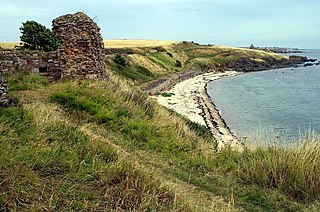 W
WArdross Castle was a c.14th century castle that was located in Elie and Earlsferry, Fife, Scotland, near the sea.
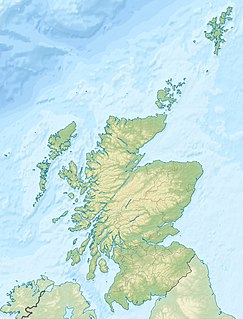 W
WAyr Castle was a castle situated at Ayr in Scotland. Once considered a royal castle, nothing remains of it above ground.
 W
WBrahan Castle was situated 3.5 miles (5.6 km) south-west of Dingwall, in Easter Ross, Scotland. The castle belonged to the Earls of Seaforth, chiefs of the Clan Mackenzie, who dominated the area.
 W
WCalderwood Castle was located in East Kilbride, Scotland. The castle was situated near the banks of the Rotten Calder Water in what is now Calderglen Country Park. Most likely constructed in the early to mid fifteenth century by the Maxwell family, the original peel tower collapsed in 1773. It was replaced by an extension to a large 18th-century country house called Calderwood House, which has itself since been demolished along with a later 1840s Gothic Revival addition.
 W
WCarnegie Castle was a castle that was located in Angus, Scotland. The Carnegies owned the property between the 15th-18th century. The site of the castle is now farmland. No remains above ground are visible.
 W
WCastle Croft was located near New Leslie farm, about 5 kilometres (3.1 mi) south-west of Insch, in Aberdeenshire, Scotland. It was the property of the Leslie family from the later 15th century. By the early 17th century it was the residence of the Leith family, before they built and occupied Leith Hall from 1650. The castle is recorded as being in ruins in 1724, and the final remains were removed in 1842. No trace of the castle can be seen today.
 W
WThe Castle of Rattray was a medieval Scottish castle, with multiple variations on its structure over approximately six centuries. Originally built as a "late 12th- or early 13th century defensive motte" it provided protection for Starny Keppie harbour and Rattray village. Sometime between 1214 and 1233 it was upgraded by William Comyn, jure uxoris Earl of Buchan before being destroyed in the 1308 Harrying of Buchan. After Comyn's timber castle was burned down it was replaced by a stronger stone castle which was engulfed during a 1720 sand storm along with nearby Rattray village. After the storm, the castle was not dug out and remains covered to this day. The castle was described by W. Douglas Simpson as one of the nine castles of the Knuckle, referring to the rocky headland of north-east Aberdeenshire.
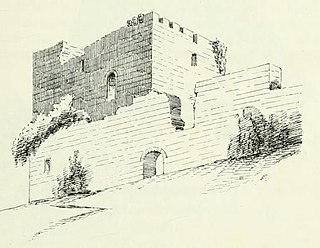 W
WCathcart Castle was a 15th-century castle, located in what is now Linn Park in the Cathcart area of southern Glasgow, Scotland. The castle was abandoned in the 18th century, and the remaining ruins were pulled down in 1980, leaving only foundations visible.
 W
WCavers Castle was a castle that was located near Cavers, Scottish Borders, Scotland. The castle was the caput baronium of the Lordship of Cavers. The lands and barony was granted to the Balliol family in the 12th century. In the 14th century Cavers was granted to the Douglas family, due to the Balliol's support of King Edward III of England and Edward Balliol, competitor for the Scottish crown during the Second War of Scottish Independence. The castle appears to have been incorporated into the former Cavers House.
 W
WComrie Castle is a ruined castle about 15 miles north of Comrie, Perth and Kinross, Scotland. The castle is located on the River Lyon.
 W
WCoull Castle was a 13th-century castle to the south of Coull, Aberdeenshire, Scotland.
 W
WCrail Castle was a castle that was located in Crail, Fife, Scotland. Crail became a Royal Burgh in the 12th century. The castle was frequented by King David I of Scotland during his reign in the early 12th century and a receipt for its repair survives dated 1264. Ada de Warenne obtained Crail as part of her marriage settlement with Prince Henry of Scotland. King Robert I of Scotland reconfirmed Crail's burgh status in 1306 and confirmed the constabulary of the castle to Lawrence de Weirmerstoun in 1310. Within the castle was a chapel dedicated to the Irish Saint Rufus.
 W
WCumbernauld Castle was the predecessor of Cumbernauld House in the Park in Cumbernauld. The Motte of the earliest castle survives, and stones of the second castle are incorporated in the present house.
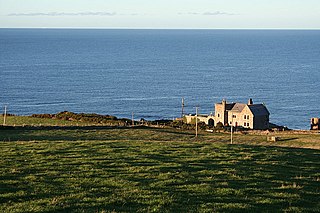 W
WDundarg Castle is a ruined castle about 2 kilometres (1.2 mi) north-northeast of New Aberdour, Aberdeenshire, Scotland, built within the ramparts of an earlier Iron Age promontory fort. It was described by W. Douglas Simpson as one of the nine castles of the Knuckle, referring to the rocky headland of north-east Aberdeenshire.
 W
WDundee Castle was a castle in Dundee, Scotland, destroyed by Robert the Bruce in 1313.
 W
WEaster Greenock Castle was a castle of unknown design near the burgh of Greenock, Scotland.
 W
WElgin Castle was a 12th-century castle built near Elgin, Moray, Scotland.
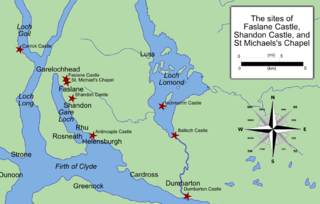 W
WFaslane Castle and Shandon Castle were two mediaeval Scottish castles which once stood between the towns Garelochhead and Helensburgh, near the shores of the Gareloch, in Argyll and Bute. In the 19th century, the castles were thought to have dated back to the Middle Ages. At that time period, they were situated in within the mormaerdom of Lennox, which was controlled by the mormaers of Lennox. Today nothing remains of Faslane Castle; though in the 19th century certain ruins of Shandon Castle were said to have still existed. Near the site of Faslane Castle sits the ruinous St Michael's Chapel, which has also been thought to date to the Middle Ages.
 W
WForfar Castle was an 11th-century castle to the west of Forfar, Scotland.
 W
WThe Bishop's Castle, also known as Glasgow Castle and as the Bishop's Palace, was a medieval castle in Glasgow, Scotland. It served as the residence of the bishops and archbishops of Glasgow Cathedral until the Reformation, when the last Catholic archbishop, James Beaton, fled to France in about 1560. The castle was completely destroyed in the late 18th century, to make way for the Glasgow Royal Infirmary.
 W
WJedburgh Castle was a castle at Jedburgh in Scotland. It was fought over during the Wars of Scottish Independence, and was demolished by the Scots commanded by Sir James Douglas of Balvenie in 1409. The site of the original castle was used to build the reform prison based on John Howard system, the construction of which started in 1820.
 W
WKilbride Castle, also known as Comyn's Castle, was a castle that was located to the north of East Kilbride, South Lanarkshire, Scotland.
 W
WKinord Castle, also known as Loch Kinord Castle, was a 14th-century castle on Castle Island in Loch Kinord to the south of Old Kinord, Aberdeenshire, Scotland.
 W
WKirkintilloch Castle was located in Kirkintilloch, East Dunbartonshire, Scotland.
 W
WLeuchars Castle, was a castle that was located near Leuchars, Fife, Scotland.
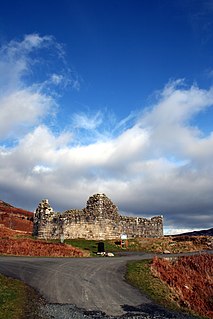 W
WLoch Doon Castle was a castle that was located on an island within Loch Doon, Scotland.
 W
WMigvie Castle was a 13th-century castle to the west of Migvie, Aberdeenshire, Scotland. Its remains were listed as a scheduled monument in 2007.
 W
WOliver Castle was a medieval tower house, located in the upper Tweed Valley in the Scottish Borders. The site of the hillfort known as Oliver Castle is to the north of the village of Tweedsmuir, although the site of the tower house is less certain. Mentioned in a document of c.1200, it was originally part of the line of peel towers along the Tweed Valley. It was replaced in the seventeenth century by a house, which was itself replaced in the late 18th century by the present Oliver House. For most of its existence the property has been owned by members of the Tweedie family.
 W
WPartick Castle was located in Partick, now a Western suburb of Glasgow. It was built in 1611 for the Glasgow benefactor George Hutcheson and situated on the west bank of the River Kelvin.
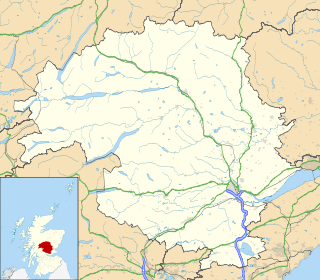 W
WPerth Castle was a 9th-century castle in Perth, Scotland. The Danes attacked the castle in the 9th century.
 W
WPollock Castle, also known as Pollok Castle, was a tower house castle located to the west of modern Newton Mearns in East Renfrewshire, on the opposite side of the M77 motorway from the town. The castle appears on Timothy Pont's map (1583–96), as a castle named Pook and also appears on Joan Blaeu's map of 1654.
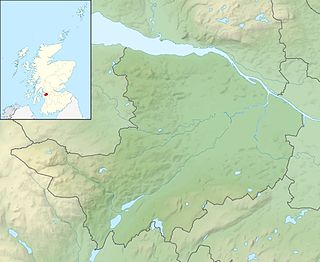 W
WRenfrew Castle was situated at the royal burgh of Renfrew, Scotland, which is near the confluence of the River Clyde and the River Cart. The original 12th-century castle was built by Walter fitz Alan, Steward of Scotland, upon a river islet known as the King's Inch. This was replaced in the 13th century with a new castle by the road to the Clyde ferry, which became a royal castle under King Robert II. In the 15th century, the King's Inch site was rebuilt as Inch Castle by Sir John Ross. Both castles were demolished in the 18th century and nothing remains above ground at either site.
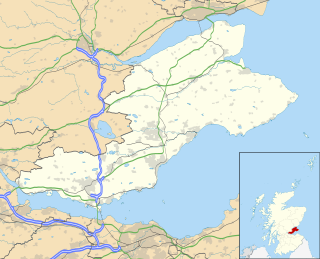 W
WTayport Castle, was a Z plan castle that was located near Tayport, Fife, Scotland. The castle was demolished in the 19th century and no remains above ground are visible.